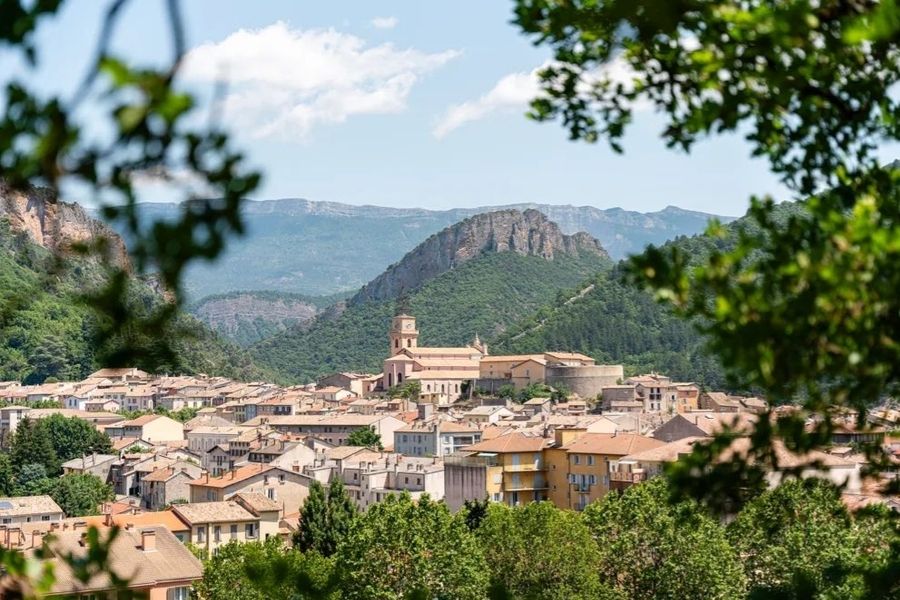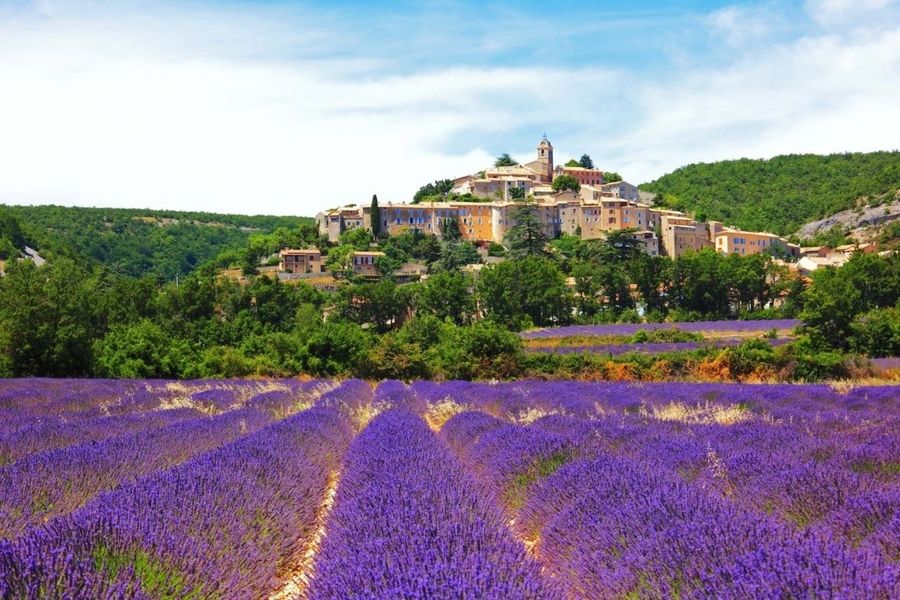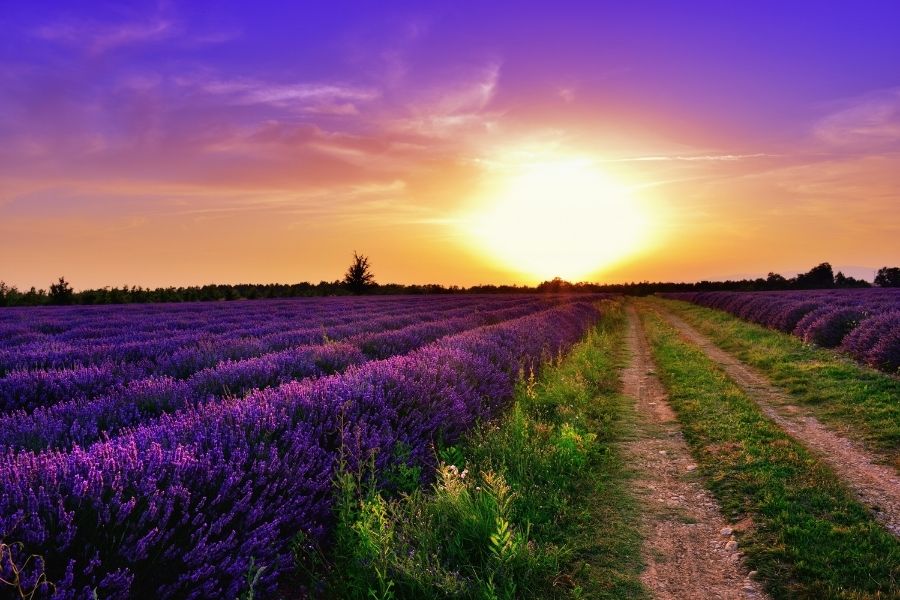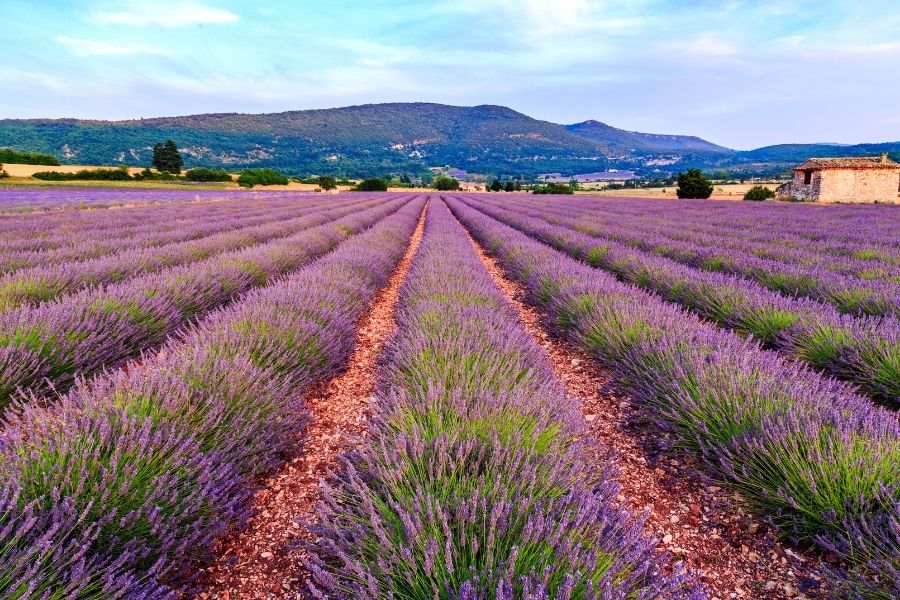There’s something a little magical about driving into Provence and spotting those endless violet bands of lavender rolling over the hills. The scent in the air calms you, and let’s be honest, everyone wants those postcard-perfect purple landscapes. But honestly, what keeps me coming back is everything beyond the fields—charming villages, peaceful lakes, and natural treasures that really show off the beauty and freedom of Provence.
Wandering the quiet streets of Sault or Valensole, I get pulled into the everyday rhythm of village life. Local markets spill over with fresh produce, stone houses lean together along narrow lanes, and the countryside waits just outside town for new adventures.

Sometimes, after spending a morning in the lavender, I’ll escape to the turquoise waters of a hidden lake. Or maybe I’ll take a kayak out near Verdon and let the breeze remind me why this region feels so alive.
It’s hard to explain, but there’s a sense of nature and freedom here that goes way beyond the purple haze. Each turn brings something different—peaceful valleys, lively cafés—and somehow, every visit fills up with unexpected moments and memories that stick.
Charming Villages Beyond the Lavender Fields
As I wandered through Provence, I realized the lavender fields are really just the start. The villages tell their own stories, through old stonework, creative roots, and a strong sense of community.
Discovering Provençal Village Life
Walking into a village like Valensole or Banon, I felt the pace slow down. Locals often say hello in the small squares, and I loved watching cafés fill up as the afternoon drifted by.
Market mornings are a must—stalls loaded with olives, cheese, bread, and lavender crafts. I joined a walking tour in Forcalquier run by a local association, and it opened my eyes to centuries-old fountains and hidden alleys lined with flower pots.
Villages celebrate their own festivals, too. In Manosque, I stumbled into a day for local literature—stories read aloud in the open air, connecting past and present.
Lower Towns and Their History
The “lower towns” of Provence sit at the base of hills or along rivers, like the edge of Digne-les-Bains. Their roots often reach back to Roman times. I noticed a quiet sense of remembrance in these places—plaques by doorways, memorial gardens, and worn steps leading to hilltop churches.
Banon’s lower town surprised me with its stone houses and narrow streets. Local guides talk about the dedication shown during hard times, especially in World War II.

As I walked along the river in Digne-les-Bains, every bridge and alley held layers of history—centuries of daily life and small, proud acts of resistance.
Art and Artists of Provence
Art lives in every village. I could see how painters—famous or not—get inspired by the light and the patchwork landscape. In Luberon villages, artists set up studios in sunlit squares, and sometimes their doors are open for visitors.
Associations support these artists and organize open-air shows. In Saint-Rémy-de-Provence, I visited a gallery dedicated to Van Gogh, whose time here still inspires painters today.
You’ll find art everywhere—from murals in schoolyards to workshops hidden in old stone cellars.
Crystal Lakes and Enchanted Forests
Calm blue lakes and thick forests hide in Provence, offering beauty and peace away from the busy lavender fields. I think these places add another layer of wonder to the landscape, especially if you love nature’s quieter side.
Exploring Lakes and Water Activities
When I visited the Valensole Plateau, the shimmering Lac de Sainte-Croix caught my eye just as much as the purple blooms. This wide, clear lake at the foot of the Gorges du Verdon is perfect for swimming, kayaking, and paddle boarding.
Renting a pedal boat here was a highlight—I drifted along under bright summer skies and felt like I could stay forever. Lac de Sainte-Croix isn’t alone. Lac d’Esparron, smaller and less crowded, is great if you want a break from tourists.
The water is inviting and the green surroundings are especially lush in late spring and early summer. Picnicking by the shore with fresh bread and cheese makes for a simple, unforgettable meal.
Water Activities Table:
| Lake | Popular Activities | Best for |
|---|---|---|
| Lac de Sainte-Croix | Swimming, kayaking, boating | Stunning, scenic views |
| Lac d’Esparron | Canoeing, swimming, picnic | Peaceful, quieter visits |
Green Escapes: Forest Walks and Nature Trails
Forests in Provence burst with color and sound, especially from May to July when the trees are at their greenest. One of my favorite spots is the Forêt de Cèdres near Bonnieux.
Walking beneath giant cedars, I breathe in the earthy smell of pine and moss. The trails are well-marked and perfect for short walks or long hikes, and the views over the Luberon hills are their own reward.
The Montagne de Lure region is another gem. It’s not as famous, but it’s full of wildflowers, butterflies, and shaded paths. Trails wind through rolling woods and past old stone ruins, reminders of Provence’s long history and rich soil.
I always bring a water bottle and my camera, since the landscape changes with the season—lush and full in spring, more golden as summer peaks.

Forest walks in Provence slow me down. I notice the rustle of leaves, the buzz of insects, and the gentle shape of land shaped by centuries of growth.
Castles, Chapels & Places of Worship
As I traveled through Provence, I found myself fascinated not only by the lavender but by the mix of history and spirituality everywhere. Some castles and churches stand right by the purple fields, each with its own story, offering peace and a glimpse into the past.
Step Into History: Visiting Castles
Castles scattered across Provence amazed me. They’re reminders of a time when defense and warfare shaped the land. The Château d’Ansouis stood out, its stone towers watching over quiet villages.
Inside, old furniture, tapestries, and ancient staircases make you feel as if time stopped. Castles usually sit on hilltops, making them perfect for photos of the lavender below.
Some estates now host guided tours or summer festivals, letting visitors experience their stories up close.
Quick list of must-see castles:
- Château de Lourmarin: Renaissance-style, known for art and music events.
- Château de la Barben: Medieval fortress, open for tours and family activities.
- Château d’Ansouis: Famous for its gardens and historic interiors.
These castles aren’t just landmarks—they’re living reminders of Provence’s grandeur and conflict.
Sacred Sites and Historic Churches
Some of my favorite places in Provence are the chapels and abbeys, where faith and memory blend with local culture. The Abbaye de Sénanque is iconic, especially in early summer.
Its stone walls frame violet fields, and I could hear monks chanting during quiet morning visits. I stopped by churches like the one in Sault, where small stained glass windows scatter sunlight on ancient pews.
Many of these sacred places started on pagan sites, linking old traditions with newer worship. During summer, some chapels open for music festivals and art shows, bringing new life to old walls.

If you’re looking for a moment of calm, or you’re curious about the spiritual roots of Provence, these places offer a powerful sense of devotion through the centuries.
Culinary Adventures: Provençal Flavors
Provence is a food lover’s paradise. Every meal tells a story rooted in the landscape, from golden saffron fields to lively fish markets on the Mediterranean coast.
Local ingredients shape the dining experience, with recipes handed down through generations.
Saffron, Herbs, and Magical Spices
Saffron fields add more than color—they bring a touch of luxury to many dishes. I remember trying saffron-infused risotto in a tiny village bistro. The taste was delicate but unforgettable.
Saffron here is picked by hand in autumn and used sparingly—each thread is precious. Provençal herbs like thyme, rosemary, basil, and savory—herbes de Provence—show up in almost every meal.
They’re the secret behind those scents that fill village markets and kitchen gardens. Locals sometimes joke about the “magic” of these herbs, telling stories about blends that bring luck or good health.
I can’t promise any kitchen witchcraft, but I swear these spices can transform even simple recipes.
List of Popular Provençal Spices and Herbs:
| Spice/Herb | Typical Use |
|---|---|
| Saffron | Rice, bouillabaisse, pastries |
| Thyme | Roasts, stews, sauces |
| Rosemary | Lamb, potatoes, focaccia |
| Basil | Pesto, soups, salads |
| Savory | Beans, poultry, vegetables |
Seafood Delights and Provençal Chowder
The Mediterranean is never far from the table here. I love browsing the fish stalls by the port in Marseille, where the catch changes every day.
Bouillabaisse, the region’s famous seafood chowder, is more than a recipe—it’s a ritual. Traditional bouillabaisse combines saffron, local herbs, and fresh fish like monkfish, rouget, and sea bass.
The dish simmers in a big pot and comes with garlicky rouille and crusty bread. Simple seafood dishes shine, too. Grilled sardines, mussels in white wine, and anchovy tapenade often fill my plate, especially in coastal villages.

The flavors are bright, fresh, and taste like a sea breeze on a sunny day.
Provençal Seafood Staples
- Bouillabaisse (seafood chowder with saffron)
- Moules marinières (mussels in white wine)
- Grilled sardines
- Anchovy tapenade
Cooking Classes and Traditional Recipes
Getting hands-on in a Provençal kitchen is one of my favorite ways to learn about the region. Many villages offer small, friendly cooking classes where local chefs share their secrets.
Once, I spent an afternoon kneading dough for fougasse, a rustic olive bread, laughing with travelers from all over. These classes usually start with a trip to the market for eggs, tomatoes, and plenty of herbs.
Then it’s time to try recipes like ratatouille, soupe au pistou, or aioli. Each class feels like both a lesson and a celebration of everyday Provençal life.
Home cooks love swapping kitchen stories and sometimes pass down odd little traditions—like stirring the pot only sunwise for luck. I always come home with a few new tricks and memories that outlast even the tastiest meal.
Stories, Artistry & Local Influence
Provence’s lavender fields have inspired stories, shaped artists, and left their mark on everyday life. I feel like every town or path near these purple landscapes is rich with history, creativity, and living culture.
Provence in Literature and Public Domain Works
Lavender’s beauty fills classic French literature. I’ve found stories set in these sunny fields, bringing to life the people and villages that thrive here.
Books like Jean de Florette by Marcel Pagnol show the struggles and joys of rural Provence, capturing the scent and light of the region. Many of these stories are available as free ebooks from Project Gutenberg, which works with volunteers to share texts now in the public domain.
Thanks to copyright laws, classic Provençal novels, essays, and travel narratives—some dating back hundreds of years—are open to anyone, anywhere.
From 19th-century poetry to descriptive essays, literature here mixes ambition with nostalgia. It’s always moving to read these works while actually walking the same roads the authors described.
Artists, Art, and Creative Inspiration
When I stand in a lavender field, I totally get why painters flocked to Provence. Vincent van Gogh, Paul Cézanne, and Marc Chagall all chased creative inspiration here.
These luminous landscapes practically beg you to pick up a brush. The bold colors and that ever-changing light? They fueled some of the world’s most famous paintings.
Provence turned into a kind of open-air studio. Local artists and visitors pick up oil paints, charcoal, or sometimes just a tablet, trying to capture those purple bands across the land.
Markets in little towns usually show off everything from original works to prints and handmade crafts. It’s honestly hard not to stop and look.
I love poking around galleries or tiny shops in villages like Roussillon. The artsy spirit really thrives there.
A lot of artists mix old traditions with new ideas, so the Provençal art scene keeps evolving. If you want to take a piece of art home, it’s surprisingly easy to find something that feels both authentic and different.

The Evolution of Provençal Culture
Provençal culture keeps shifting, but its roots run deep in tradition. I keep noticing how festivals, folk music, and food all tie lavender into daily life.
Every summer, villages throw lavender fairs and lively parades. Even now, the sights and scents of these events feel timeless.
Local ambition doesn’t just hold onto old customs—it sparks new ones. Chefs experiment with lavender in honey and desserts.
Shopkeepers hand out etexts and printed guides for curious travelers. These guides show how literature and culture keep mixing here.
Newcomers, artists, and writers keep shaping Provence’s story. The region pulses with heritage and fresh creative energy, thanks to people who can’t resist its beauty and promise.

